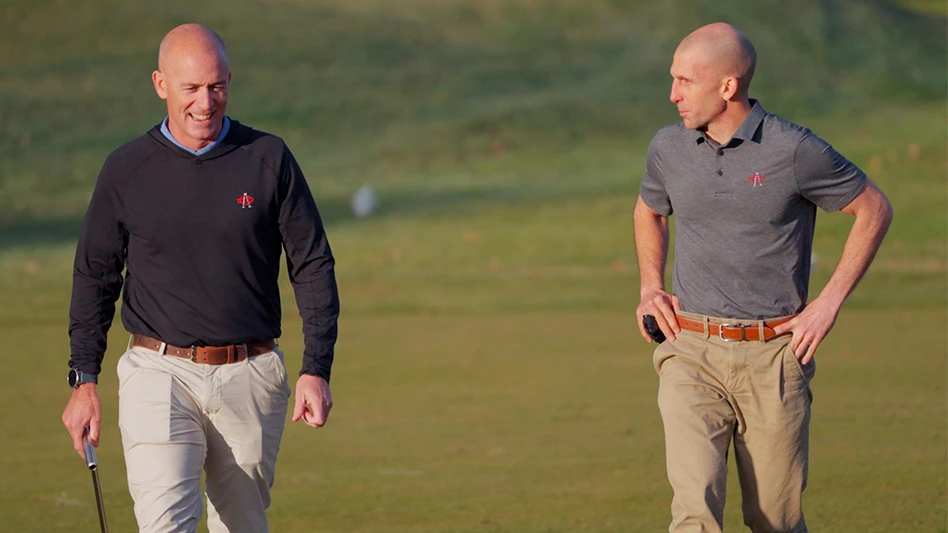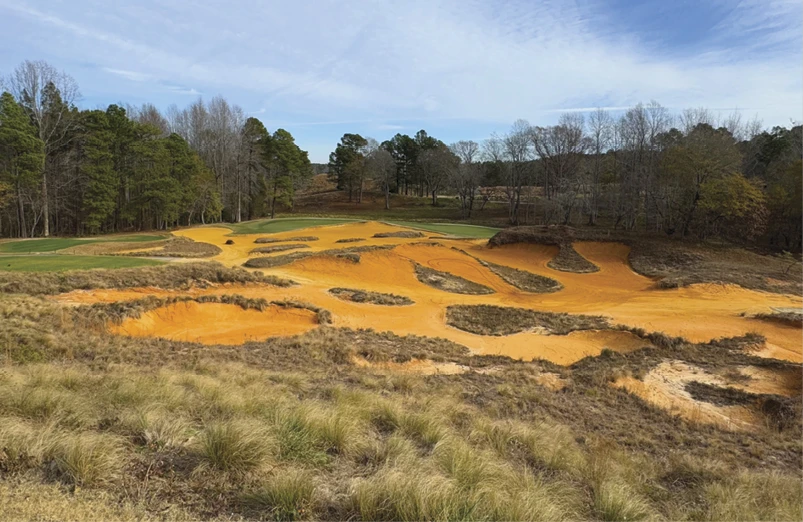
With the average age of end users hovering around 50 and distribution-sales relationships spanning decades, the golf industry presents enormous challenges for a 23-year-old entrepreneur.
Hunter Swisher understands his plight. That’s why he’s relying on an enormous turf network – and a personal connection to somebody managing a 300-acre golf facility – as he begins an unconventional entry into the market.
Swisher is the CEO of Phospholutions, a soil amendment possessing Rhizosorb. Phospholutions, the way Swisher describes it, helps increase root depths. His personal roots are a stark contrast to many others in the business. Swisher has never worked on a golf course and he just recently started playing the game.
But he’s a Penn Stater. Swisher grew up in State College, the delightful central Pennsylvania borough surrounding the sprawling campus. Swisher earned a plant science degree from his hometown university last December. His hometown university happens to boast a sterling turfgrass reputation.
Penn State has an 88-year-old turfgrass program with more than 1,800 graduates, including many who lead the agronomic operations at facilities with seven-figure maintenance budgets. Best in county. Best in state. Best in region. Best in nation. Best in world. Name a category of golf facility, and superintendent offices are likely occupied by Penn State graduates.
The network is especially powerful in a situation like Swisher’s. His presence in the golf industry stems from a 2014 classroom discussion about plant nutrition. The mention of a technology invented at Penn State capable of altering fertilization strategies intrigued Swisher. While writing a paper about the technology, Swisher discovered patents for it in Penn State’s IP office. The technology never reached the commercial market. A belief in the technology’s ability to maximize nutrient usage convinced Swisher to explore its commercial potential.
Swisher contacted Dr. Mark Gagnon, who coordinates entrepreneur programs for Penn State’s College of Agriculture Sciences, about creating a business around the technology. Gagnon referred Swisher to the university’s Small Business Development Center. The SBDC help Swisher develop what he calls “a general business” plan.
Realizing he needed to prove the amendment worked in the field, Swisher approached a family friend, Penn State Golf Courses superintendent Rick Pagett, about performing trials. Wearing T-shirts and shorts on a 60-degree day in December 2015, Swisher and Pagett aerated the amendment into a practice green adjacent to the sixth hole on Penn State’s White Course. Pagett, a veteran superintendent and Penn State graduate, then offered Swisher one of his first turf lessons. “I convinced him at that point to start taking pictures and documenting what you are doing,” Pagett says.
Pagett views the 36-hole Penn State facility as an extension of the classroom. More than 100 students have worked on the crew during his decade as superintendent. Training and retraining students are tasks Pagett and assistant superintendents Scott Martell and Gabe Menna willingly perform in leadership roles at a university-operated course. Dozens of their former employees are now working as superintendents or assistant superintendents; others use principles acquired while working at the golf courses, such as the importance of rising before sunrise, in non-golf careers.
The courses, a massive swath of greenspace between campus structures, housing and commercial development, present research opportunities for students and faculty members. If somebody affiliated with the university wants to test a product or collect data, Pagett, who teaches a turfgrass business management class at Penn State, says they simply need to contact him beforehand. “I feel that we are a great opportunity, not just for Hunter, but for anybody else, whether they are in ag, hotel/restaurant management or any other department, to come out here and do whatever they want,” he says.
Trials on the practice green increased in 2016 and a sweltering summer allowed him and Pagett to observe roots under trying conditions. Pagett then applied the amendment on the front nine holes of the Blue Course – Penn State’s championship venue – this year. The season included a wet spring, mild summer and dry start to the fall.
Swisher’s discovery came at a fortuitous time. Penn State hired Dr. Eric Barron as president in 2014, and Barron made providing support for students and faculty members with a desire to bring an IP to the public domain a priority.
In addition to the SBDC, Swisher received support from Invent Penn State and Pennsylvania Technical Assistance Program. Swisher participated in Happy Valley LaunchBox, an accelerator program that required him to participate in a nine-week entrepreneurial bootcamp, the Summer Founders Program and Ben Franklin TechCelerator. A $10,000 grant through the Summer Founders Program allowed Swisher to use the summer of 2016 to focus on his business without obtaining a part-time job or taking classes.
After numerous discussions with business experts and Pagett, Swisher decided to make turf the starting market for Phospholutions. The product launched commercially in June, a month after a demonstration ceremony on the fifth green of the Penn State White Course attended by Barron. The ceremony marked the first time a sitting Penn State president visited the course during Pagett’s tenure as superintendent. Phospholutions was applied via a DryJect machine at the ceremony. DryJect President John Paddock, a former golf course superintendent, is a Penn State turfgrass science alum.
Trials have expanded to other golf courses, and Penn State ties are helping Swisher connect with superintendents in multiple regions. “The reputation of the turf program at Penn State and being able to leverage that I’m a Penn Stater helps,” he says. “There are a lot of Penn Staters across the nation at some pretty high-end clubs.”
Swisher realizes he needs more than the Penn State name to break into the turf market. He must prove Phospholutions can boost roots in myriad regions, conditions and soil types. And then there’s the complex task of establishing relationships with users and distributors twice his age. Swisher spends his days making phone calls, visiting superintendents and working to develop distribution channels. He’s attended multiple trade shows, including the Golf Industry Show in Orlando and GIE+EXPO in Louisville, this year.
“The hardest thing in the turf business is that it’s a very mature industry and it’s really a relationship-based business,” he says. “For me, tapping into that is really hard. I don’t have a turf background. I have a very high technical plant science background, but I have never worked at a golf course. I have learned the lingo and picked it up. It’s been a pretty big learning experience for me.”
The process, Swisher says, is a “slow moving one,” but he speaks enthusiastically about the potential for Phospholutions in turf. Appeasing results-seeking investors is a key part of beginning any business, and identifying agricultural applications, thus expanding the market for Phospholutions, represents a long-term goal. Swisher has recently started working with a sugarcane producer who manages 5,000 acres near the Everglades.
“It’s unique because most people start in ag and prove there that their product works, and then there’s a side market for turf,” Swisher says. “We have actually taken the reverse approach because turf is more of a high-end application. That can help get me get going.”

Explore the November 2017 Issue
Check out more from this issue and find your next story to read.
Latest from Golf Course Industry
- TerraRad receives strategic investment from Old Tom Capital
- Beyond the Page 63: A different approach to labor
- 2025 Super Social Media Awards: Joshua Kelley
- Spanish Bay set for 2026-27 renovation
- An updated Iowa classic turns to Troon
- Introducing our January 2025 issue
- Bergin renovating Florida’s Golf Club at Crown Colony
- Club at Porto Cima picks KemperSports





